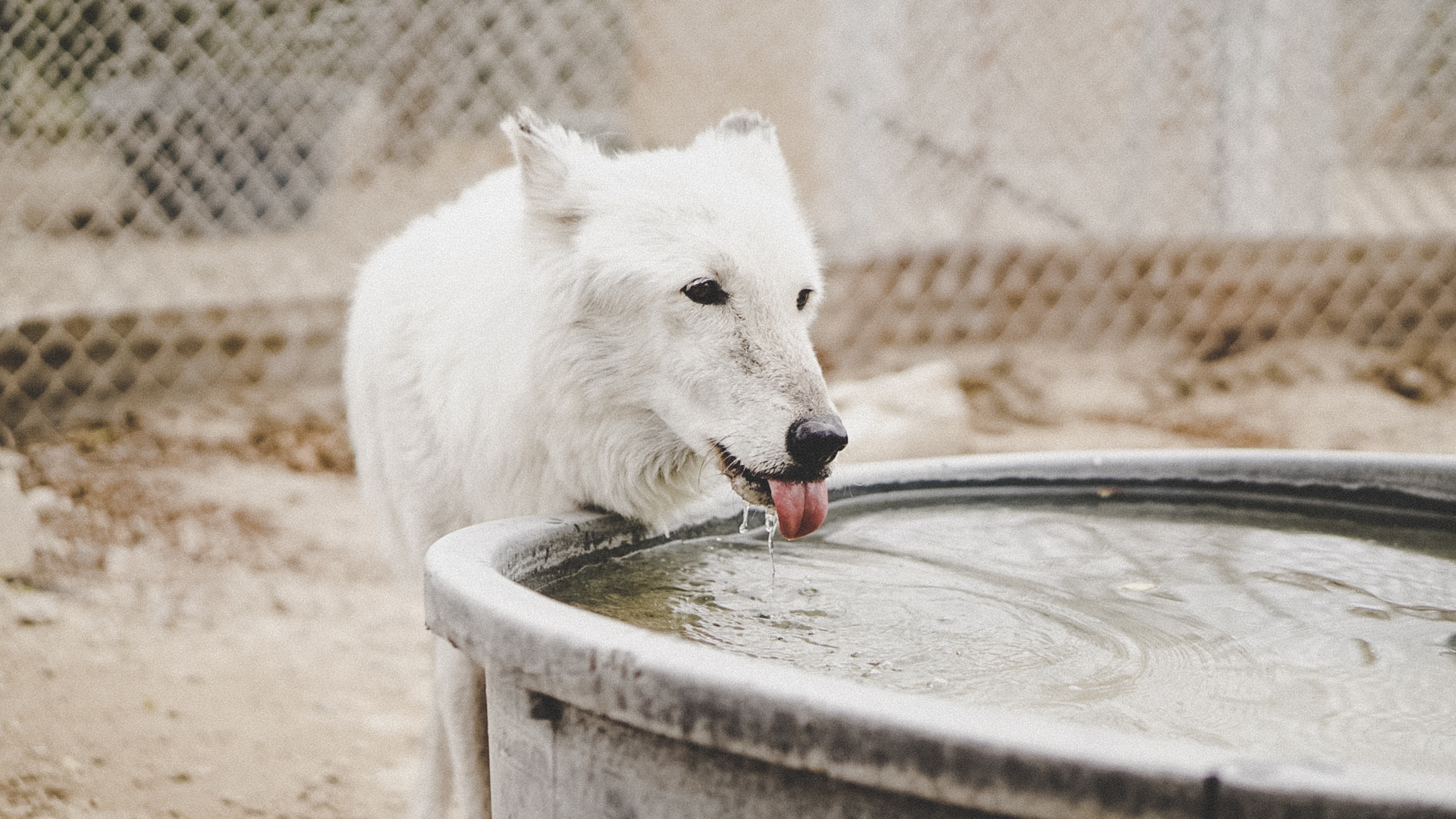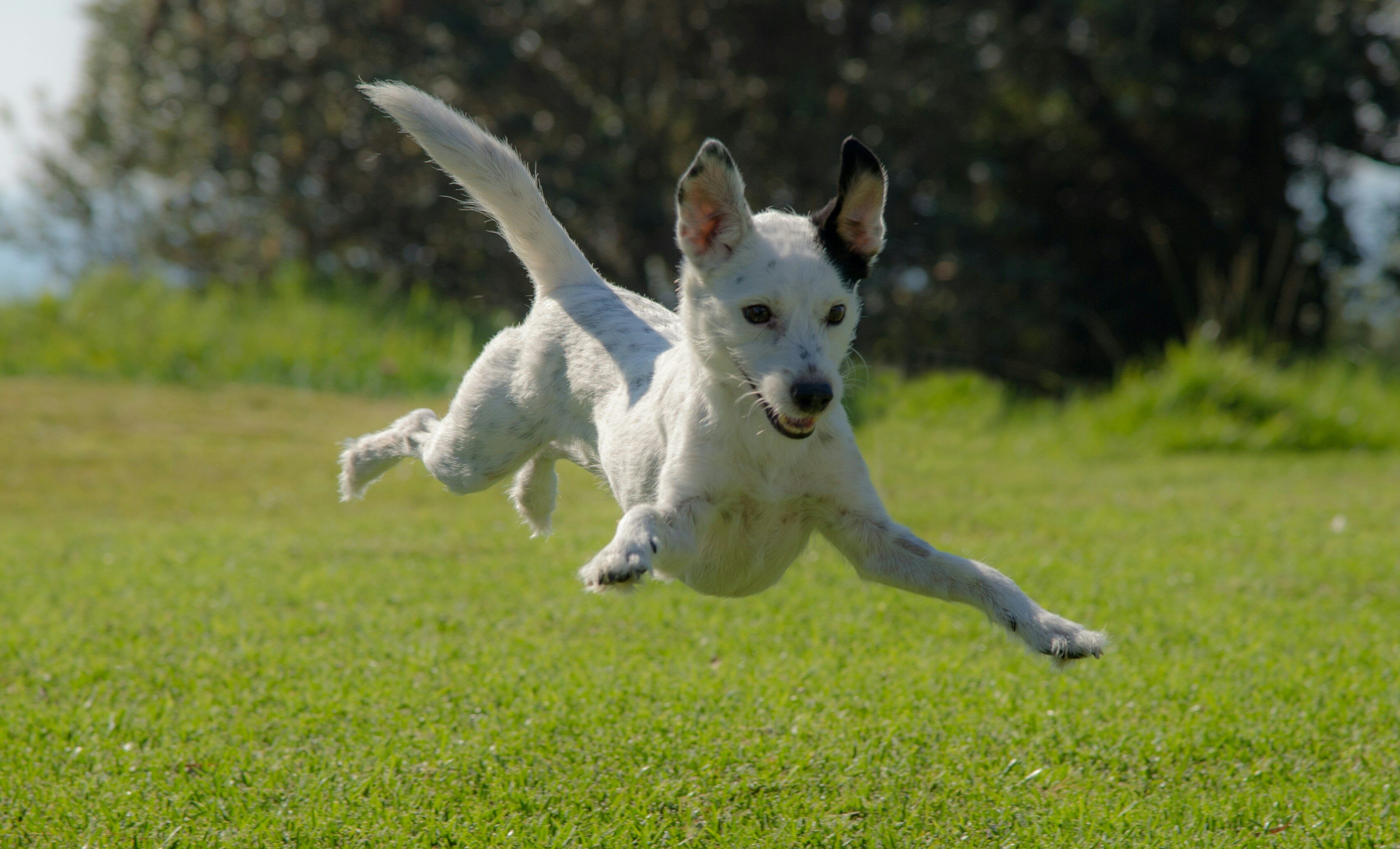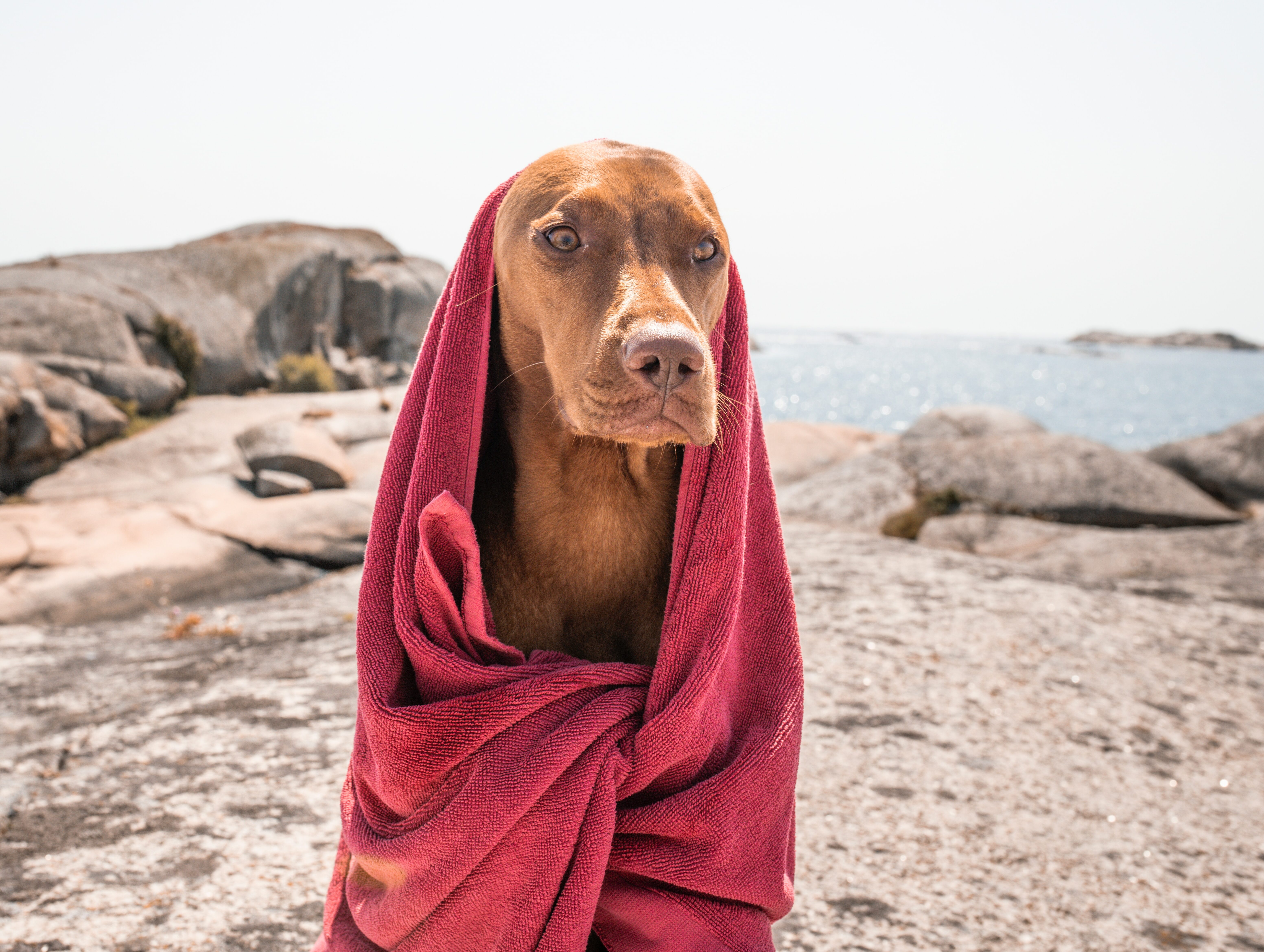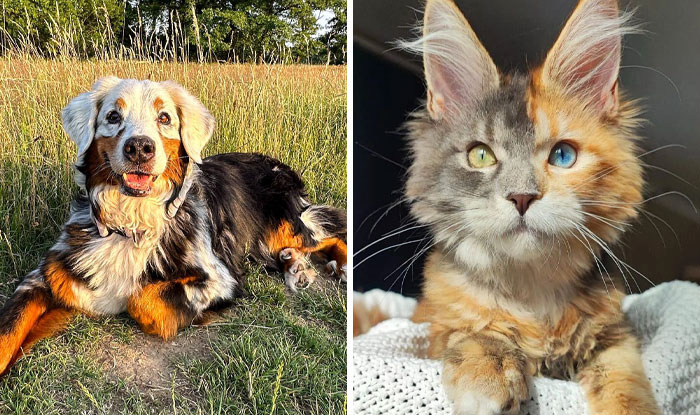Navigating the challenges of keeping your canine companion comfortable amid scorching temperatures is a fundamental aspect of responsible pet care.
Ensuring your dog stays comfortable in the heat isn’t just about their happiness—it’s vital for their safety. Imagine this: when temperatures pass 80°F (26.7°C), it’s a warning sign, especially for breeds with shorter snouts or thick fur.
- Temps above 80°F pose risk, especially for some breeds.
- Limit midday exercise to prevent overheating.
- Cooling mats help absorb and disperse body heat.
- Never leave a dog in a car, as it can get dangerously hot.
That’s when dogs start feeling uneasy. But when it hits 90°F (32.2°C), it’s a serious red flag. Beyond discomfort, it poses real risks to their health.
Understanding these temperature limits is crucial for pet owners. It’s not just about knowing it’s hot, but realizing the dangers it brings.
It’s a call to action—to provide shade, water, and adjustments in activities. By being aware of these thresholds, we can protect our furry friends from the risks that come with scorching temperatures.
From this point onward hot is too hot. Heat-related ailments, ranging from heat exhaustion to the dire consequences of heatstroke, become alarmingly plausible threats.
Understanding these temperature thresholds isn’t just a guideline; it serves as a vital compass, directing us in the mission to shield our furry friends from the perils of sweltering weather conditions.
However, ensuring your dog’s well-being during hot weather isn’t solely reliant on recognizing temperature boundaries. It’s a holistic approach that encompasses various proactive measures aimed at mitigating the adverse effects of heat exposure.
Let’s delve into expert advice and practical strategies that every dog owner can employ to keep their furry friends cool, comfortable, and safe during the heat of summer. Here are the best ways to keep your dog comfortable and cool in summer heat.
The information provided herein is for informational purposes only. Please refer to our disclaimer for more details..
- 1. Hydration – Keep Water Close By
- 2. Shade and Shelter – Avoid Dog House
- 3. Limit Outside Exercise and Avoid the Midday Heat
- 4. Use cooling mats or pads designed for pets
- 5. Using Wet Towels or Bandanas
- 6. Avoid Hot Surfaces
- 7. Regularly Groom and Brush Your Dog
- 8. Ofer Cool Treats
- 9. Never Leave Your Dog Alone in the Car
- 10. Monitor for Signs of Heatstroke in Dogs and Overheating
1. Hydration – Keep Water Close By
Image credits: Courtney Clayton.
Hydration is the cornerstone to keep an outside dog cool and healthy during hot weather. Providing constant access to fresh, clean water is paramount in preventing dehydration and aiding your dog’s body in regulating its temperature.
Providing your dog plenty of cool water is helping to keep your dog cool in the summer heat. Dog needs plenty of water and even more in warm weather. Consider enhancing their water bowl by adding ice cubes.
Not only does this keep the water stay cool for an extended period, but it also entices your dog to drink more frequently, ensuring they stay well-hydrated throughout the day.
Ice cubes act as refreshing treats, enticing them to consume more fluids, especially when the temperatures soar. This simple addition can make a significant difference, offering your furry companion a refreshing oasis to quench their thirst and combat the heat effectively.
2. Shade and Shelter – Avoid Dog House
Offering shaded spots for your dog to seek respite is crucial in mitigating the heat’s impact. Whether indoors or outdoors, prioritizing shaded areas becomes a lifeline for your furry friend during scorching weather.
Outdoors, strategically positioning canopies or setting up an air conditioning doghouse shields them from direct sunlight, offering a cool sanctuary. This not only prevents overheating but also reduces the risk of sunburns on their sensitive skin.
Creating these shaded retreats provides a haven where your dog can rest comfortably without being exposed to the intensity of the sun. Moreover, indoors, consider drawing blinds or curtains to block out direct sunlight from warming up your dog’s resting spots.
It’s about curating a space where they can escape the heat’s onslaught, ensuring they have the freedom to move to cooler areas at their discretion. By proactively providing these shaded zones, you empower your furry companion to regulate their body temperature effectively, contributing significantly to their overall comfort and well-being during hot weather.
3. Limit Outside Exercise and Avoid the Midday Heat
Image credits: Ron Fung.
Restricting strenuous physical activity for your dog when it’s hot outside is paramount to prevent overheating or exhaustion. Opting for walks or play sessions in the early mornings or late evenings is strategic, as temperatures tend to be cooler, minimizing the risk of heat-related issues.
These periods offer a refreshing atmosphere for your dog to indulge in exercise without being overwhelmed by the scorching sun. Beyond just the temperature, the ground can also be a concern.
During midday heat, pavement or asphalt can become scalding, potentially burning your dog’s paws. By choosing cooler times to take your dog out, you safeguard them from such dangers. Additionally, the cooler air during these times allows for more enjoyable and sustained physical activity, ensuring that your dog can exercise comfortably and safely.
Ultimately, by limiting activities with your dog during hot summer months, you not only prioritize your dog’s safety but also enhance the quality of their exercise, fostering a more pleasant experience for both you and your furry companion. Don’t forget to give your dog much water!
4. Use cooling mats or pads designed for pets
Most pet cooling mats are made from a special gel formula or are water-filled. Those are designed to absorb the body heat while the dog or cat is lying on it. These mats work on simple physics and can absorb and disperse the heat faster than common fabric (like cushions that are designed to keep heat) that way cooling pets.
Depending on the heat, it may take more time for dogs to cool down. While it may seem logical to make it wet or to put it in the freezer avoid doing these as these actions can make cooling mats less efficient or make them unusable.
5. Using Wet Towels or Bandanas
Image credits: Jessica Bulling.
Using damp towels or bandanas can be a game-changer in helping your dog beat the heat. When soaked in cool water and draped around specific areas like their neck, under their armpits, or along their back, these simple accessories can work wonders in aiding your dog’s natural cooling mechanisms.
The areas where blood vessels are closer to the surface, like the neck and armpits, allow for efficient heat dissipation. By applying a damp towel or bandana to these spots, you facilitate the transfer of heat away from their body, providing instant relief.
Moreover, the evaporative effect of the damp fabric helps regulate their body temperature by cooling the skin. This technique mimics the cooling effect of sweating in humans. It’s a quick and effective method to help your dog stay comfortable in the face of soaring temperatures. Just ensure to periodically re-dampen the towel or bandana to maintain its cooling effect and allow your furry companion to breeze through the hottest of days with ease.
6. Avoid Hot Surfaces
During scorching weather, being mindful of where your dog treads is pivotal to their paw health. Asphalt and pavement, when exposed to direct sunlight, absorb and retain an immense amount of heat, becoming hot ground.
This poses a significant risk of burns to your dog’s paw pads. Opting for grassy or shaded areas for walks or playtime becomes crucial, offering cooler and safer surfaces for their delicate paws. Grassy areas not only provide a softer and more comfortable terrain but also tend to retain less heat than hard surfaces, reducing the risk of burns, and are not hot for your dog.
Moreover, shaded paths or trails with natural cover can offer a reprieve from direct sun exposure while allowing your furry friend to explore comfortably. If asphalt or pavement is unavoidable, aim for early morning or late evening walks when these surfaces are cooler. Ultimately, these mindful choices in walking locations ensure your dog’s paw pads remain protected and free from potential burns during hot weather, promoting their overall well-being and comfort.
7. Regularly Groom and Brush Your Dog
Image credits: Ron Lach.
Maintaining your dog’s grooming routine plays a pivotal role in managing their comfort during hot weather. Regular brushing serves as a proactive measure to remove loose fur, preventing matting and tangles that could trap heat close to their skin.
This simple act aids in allowing air circulation through their coat, facilitating natural cooling. However, it’s crucial to strike a balance—while removing excess fur is beneficial, avoid shaving your dog’s coat excessively short.
Their fur serves as a natural insulator, providing protection not only from the cold but also from the heat. Shaving too closely can expose their sensitive skin to direct sunlight, potentially causing sunburns or increasing the risk of overheating.
Instead, opt for a moderate trim or consult with a professional groomer for guidance on an appropriate summer cut. This approach ensures that your furry companion enjoys the benefits of a well-groomed coat while still having adequate protection against the hot day, maintaining their comfort throughout hot weather days.
8. Ofer Cool Treats
Introducing frozen treats to your dog’s summer repertoire can be both a delightful indulgence and a cooling relief. Crafting frozen delights like ice cubes with added bits of dog-safe fruits or a dollop of peanut butter serves as a refreshing snack, enticing your furry friend to hydrate while enjoying a flavorful treat.
Additionally, preparing pupsicles, utilizing ingredients safe for canine consumption such as yogurt, pureed fruits, or even a dash of unsalted broth, offers a creative way to keep dogs cool in summer. These frozen concoctions provide mental stimulation and hydration simultaneously, making them an excellent choice during sweltering days.
Not only do these treats offer a reprieve from the heat, but they also engage your dog’s senses, providing a source of entertainment and sensory enjoyment. By incorporating these icy delights into their routine, you not only aid in keeping your dog hydrated but also add a touch of excitement to their summer days, making hot weather a little more bearable and enjoyable for your beloved companion.
9. Never Leave Your Dog Alone in the Car
Image credits: Erik Mclean.
Leaving a dog in a parked car during hot weather poses an immediate and severe threat to their well-being. The interior of a car can rapidly transform into a scorching oven, reaching life-threatening temperatures within minutes, even if the windows are slightly open they can get extremely hot in direct sun.
As the sun beats down on the vehicle, the trapped heat intensifies, creating an environment that can lead to heatstroke or even death in a matter of minutes.
Dogs are highly sensitive to heat and lack efficient mechanisms to cool themselves in such circumstances. Their body temperature can escalate rapidly, leading to heatstroke, which damages internal organs and can be fatal if not treated promptly.
It’s crucial for pet owners to recognize that leaving a dog in a parked car—even for a short duration—poses an immense risk. Even on relatively mild days, the temperature inside a car can get too hot.
Therefore, the golden rule stands: if you’re heading somewhere that doesn’t permit your dog to accompany you indoors, it’s safest to leave them at home in a cool, shaded environment with access to water. This simple precaution can spare your beloved companion from the perils of extreme heat, ensuring their safety and well-being.
10. Monitor for Signs of Heatstroke in Dogs and Overheating
Monitoring your dog for signs of overheating during hot weather is crucial to prevent the onset of potentially life-threatening heatstroke. Recognizing these signs allows for swift action, ensuring your furry companion receives immediate aid.
Excessive panting, drooling, and a rapid heartbeat are among the primary indicators of overheating. Your dog may exhibit weakness, disorientation, or even collapse as their body struggles to cope with the heat. Vomiting or diarrhea can also accompany these symptoms. It’s essential to act promptly if you notice any of these signs.
Should you suspect heatstroke, the first step is to move your dog to a cooler area immediately. Find shade or a cooler indoor space to help lower their body temperature and help your dog cooling.
Applying cool (not cold) water to their body, especially the groin area, armpits, and neck, aids in dissipating heat. You can use towels soaked in cool water or even a spray bottle to gradually lower their body temperature.
Avoid using ice-cold water or ice packs, as this can constrict blood vessels and hinder heat dissipation. Keep the air nice and cool and ventilated, and keep an eye on your dog provide water for your dog, and get your dog to the vet as soon as possible.
Simultaneously, contact your veterinarian or seek emergency veterinary care. Heatstroke is a medical emergency that requires professional attention.
Even if your initial cooling efforts seem to help, it’s crucial to have your dog evaluated by a vet. Heatstroke can cause internal damage, and prompt medical intervention is vital for your dog’s well-being.
In summary, vigilance is key in hot weather. Monitoring your dog for signs of overheating and acting swiftly if you suspect heatstroke can be life-saving.
By understanding these signs and knowing how to respond effectively, you can safeguard your dog’s health and ensure they receive the necessary care to recover from heat-related issues.
Ultimately, by understanding your dog’s limits in hot weather and taking proactive measures, you can ensure a safe and enjoyable summer for your cherished furry friend. Your attentiveness and care during hot weather will undoubtedly contribute to their health, comfort, and happiness.
In case you were wondering how to keep them cool… your dog is already cool, just make sure it’s healthy and happy too
127views
Share on Facebook
 Dark Mode
Dark Mode 

 No fees, cancel anytime
No fees, cancel anytime 




























![“AITA For Losing [It] And Screaming At GF To Get Out Of My House After What Her Stepbrother Did?”](https://www.boredpanda.com/blog/wp-content/uploads/2025/01/man-screams-gf-over-creepy-stepbrother-fb18-png__700.jpg)


1
2